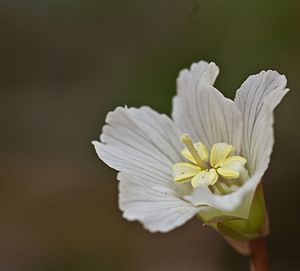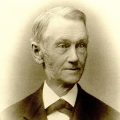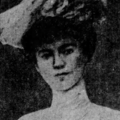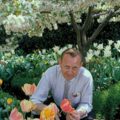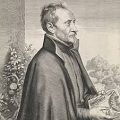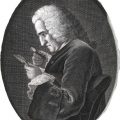John Redfield
Found Shortia Yet?
On this day in 1896, the newspaper out of Buffalo, New York, reported that the John Redfield herbarium was looking for a home.
John H Redfield was born in Middletown, Connecticut, in 1815. In 1836, Redfield became friends with Asa Gray after joining the Lyceum of Natural History in New York, where Gray was the Librarian and Superintendent. The remained life-long friends.
When Redfield married in 1843, he moved to Philadelphia and worked for his Father-in-law's company making wheels for the railroad.
During his free time, Redfield went on plant hunting expeditions with Asa Gray and other botanists.
During the 1840's Gray was trying to locate a plant called the Shortia galacifolia (commonly known as Oconee bell). Andre Michaux had found the plant and had sent it back to Paris. In 1839, when Gray was in Paris on behalf of Harvard, he found a cabinet of unidentified plants, and there was Michaux's plant - the Oconee bell. Gray named the plant Shortia in honor of the Kentucky botanist, Charles Wilkin Short.
Gray made two serious attempts in 1841 and 1843 to find the spot where Michaux had found the Shortia, but both failed. Soon every botanist wanted to find the Shortia.
In 1863 Charles Short died - and still no Shortia. Botanists dealt with constant comments like "Found Shortia yet?"
In May of 1877, a North Carolina teenager named George Hyams was walking beside the Catawba River when he spied a plant he couldn't name. His father was an amateur botanist, and he sent the specimen to a friend. A specimen made it to Gray, who could be heard crying 'Eureka' when he found it.
In 1879, Gray organized a group to see the Shortia. Along with his dear friend, John Redfield, Gray brought his wife, Charles Sprague Sargent, and William Canby. Sure enough, they found the Shortia growing in the spot Hymans found it. It was an honor for Redfield to be there with his old friend.
Redfield devoted most of the final 20 years of his life to the herbarium of the Academy of Natural Sciences in Philadelphia. During Redfield's lifetime, botanists would visit Torrey if they were in New York, Asa Gray, if they were at Harvard or in Boston, and John Redfield when they passed through Philadelphia. It helped that people genuinely liked Redfield; his botanist friends noted his "strong yet tender character" when they wrote about him in his obituary. Redfield's work at the Academy was both worker bee and preservationist. In the early 1800s, Philadelphia had been a major botanical hub in the country. Redfield made sure the early botanical work was indexed and mounted, preserving the precious botanical history of the city of brotherly love.
This post was featured onThe Daily Gardener podcast:
helping gardeners find their roots,
one story at a time
